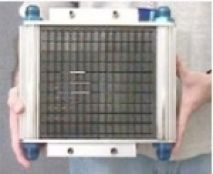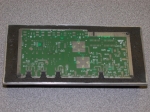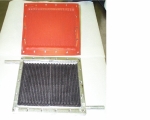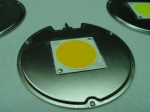SOLUTIONS & SERVICES
Solutions & Services
Thermal Management Devices

The need for lightweight, high performance, thermal management systems is moving from traditional military and aerospace applications into industrial and consumer electronics as increasing speeds in smaller devices call for the use of new and innovative materials.
These heat management devices are looking beyond solid copper and aluminum towards composites such as Al-SiC, Al-Gr, graphitic foams, pyrolytic graphite, and composites that contain diamond to manage coefficients of expansion. In some electronic package applications, ceramics such as silicon carbide and aluminum nitride are also being used.
S-Bond® solders are unique in their ability to provide a high performance thermal joint between these materials. S-Bond materials offer approximately 10 times the thermal conductivity of most thermal epoxies along with the ability to bond in air without the use of fluxes. They also allow for the rework of damaged parts. Some of the specific applications that can benefit from this are in avionics, laser systems, and high performance engine parts.
S-Bond joining has been applied to make a wide range of components, including:
- Vapor Chambers
- Phase Change Thermal Storage Devices
- Radiators
- Heat Pipes
- Cold Plates

The image at left shows an Aluminum-Silicon Carbide (Al:SiC) composite actively-cooled cold plate for high power electronic cooling used in avionics. Another application includes advanced cold plates that contains an S-Bond joined graphite foam core that reduces weight, profile and lowers the cooling fluid flow requirements. The versatility of S-Bond has also been demonstrated when bonding machined Gr-foam fins to aluminum cross flow tubes to produce a lightweight heat exchanger, as seen on the Advanced Thermal Managment page.

In the image shown to the left, a high-powered circuit board is imbedded into an S-Bond joined graphite foam / phase change material (paraffin), thermal storage heat sink. S-Bond thermally and physically connects a finned outside aluminum enclosure. This design permits fast cooling of transient power spikes in the circuit board, containing the board in its own environment. S-Bond’s versatility in the joining of graphite foam to aluminum permits such innovative designs.
Thermal management is also achieved using heat pipes that channel evaporated and condensed fluids from hot to cold ends, providing “self-powered” heat transfer. S-Bond and its various alloys are able to adhere to copper outer tubes, bonding the pipes physically with excellent thermal connectivity to the bases that are being cooled and also the bond fin structures to their corresponding hot side.

The figure to the left shows where S-Bond has been used to bond graphite foam water cooling channels into an aluminum water cooled cold plate for cooling high power electronic circuitry.

A high power LED is bonded to a water filled Cu-based vapor chamber using S-Bond 140. Bonding was achieved below 150ºC, thus preventing the evaporation pressures in the tube from expanding and ruining the heat pipe.
S-Bond materials and processes have been shown to be very effective bonding solution in a wide range of advanced thermal management components.
Contact Us about your application and let us engineer an S-Bond solution for you.
Look for addtional Thermal Management bonding information in the Technology & Applications White Papers and the Blog.
More Information?
If you would like someone to contact you or provide information, please submit the information to the right.
